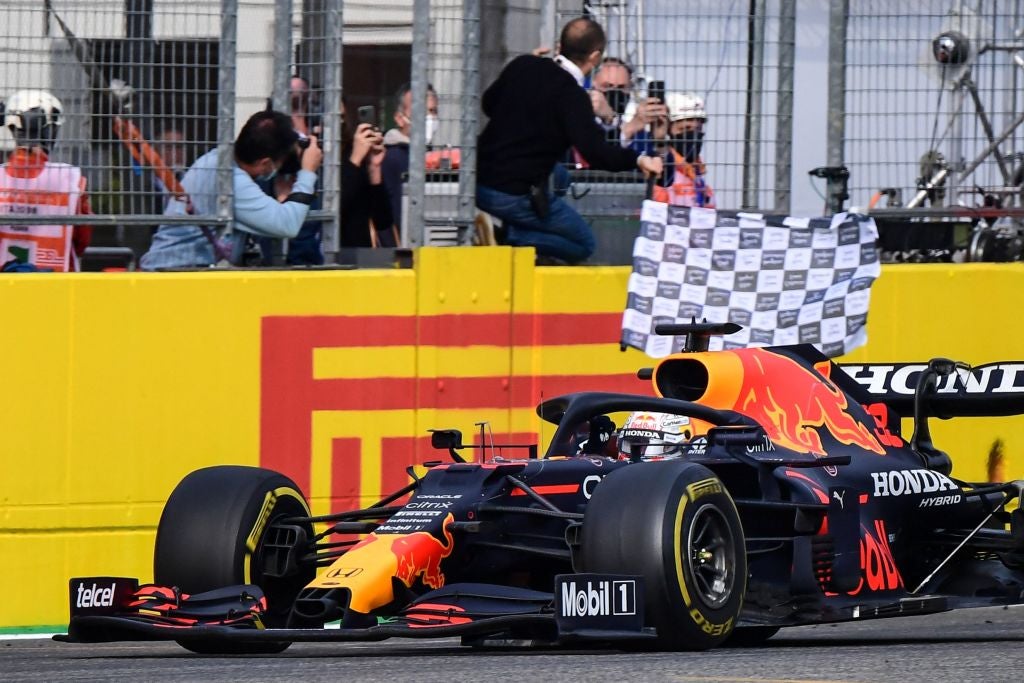What is F1’s new sprint qualifying and how will it work?
Formula One’s new setup could provide a mix of positives and problems for drivers, teams and fans alike

Your support helps us to tell the story
From reproductive rights to climate change to Big Tech, The Independent is on the ground when the story is developing. Whether it's investigating the financials of Elon Musk's pro-Trump PAC or producing our latest documentary, 'The A Word', which shines a light on the American women fighting for reproductive rights, we know how important it is to parse out the facts from the messaging.
At such a critical moment in US history, we need reporters on the ground. Your donation allows us to keep sending journalists to speak to both sides of the story.
The Independent is trusted by Americans across the entire political spectrum. And unlike many other quality news outlets, we choose not to lock Americans out of our reporting and analysis with paywalls. We believe quality journalism should be available to everyone, paid for by those who can afford it.
Your support makes all the difference.Formula One has announced it will introduce ‘sprint qualifying’ races to three grands prix this season.
Under the new plans, a sprint qualifying will take place on Saturday afternoon to set the grid for Sunday’s grand prix. The qualifying will be in the format of a race, run over 100km and lasting around 25-30 minutes, allowing the drivers to go flat-out without needing to pit.
Points will be awarded to the top three finishers, with three points for the victory down to one point for third.
The traditional Q1, Q2 and Q3 qualifying format will be moved to the Friday, with the session used to set the grid for the sprint races rather than the main race.
As a result of the Friday qualifying, practice will be reduced to two one-hour sessions. Free Practice 1 will take place on Friday before qualifying and FP2 will be held on the Saturday before the sprint race.
“We are excited by this new opportunity that will bring our fans an even more engaging race weekend in 2021.
“I am delighted that all the teams supported this plan, and it is a testament to our united efforts to continue to engage our fans in new ways while ensuring we remain committed to the heritage and meritocracy of our sport,” said Formula One President and CEO Stefano Domenicali.
However, Formula One’s new setup could provide a mix of positives and problems for drivers, teams and fans alike.
Pros and cons
Pro: More on-track action
Improving on-track action is the main focus of these changes, with the addition of the sprint race creating more opportunities to see Formula One’s brightest talents battling it out on some of the best circuits on the calendar.
At this moment, it appears Silverstone, Monza and Interlagos are the most likely venues to trial these sprint races.
Drivers will need to trust their racing instincts in order to move their way up to the front of the grid for the main race and so fans should be treated to some spectacular on-the-edge overtakes and lots of battles up-and-down the grid.
The reduction from three one-hour sessions to two means that drivers lose crucial testing time on track. Therefore, teams will be forced to maximise both sessions and hopefully fans won’t be forced to enduring long periods of little to no action during practice.
Pro: Changing of tyre allocation
Under Formula One’s rules, the top 10 drivers must start the race on the set of tyres they set their fastest time on in Q2. However, these rules will not apply to the sprint races, where drivers will race on a set of soft tyres without the need to pit.
As a consequence, drivers will be free to start Sunday’s race on any tyre compound they choose, and this could allow for some interesting strategies as teams attempt to mix things up and capitalise on their tyre advantage during the race.
Con: Biggest teams will still have an advantage
These sprint races may only worsen the differences in pace between the leading teams of Mercedes and Red Bull and those such as Williams, Alfa Romeo and Haas at the back of the grid.
For example, in qualifying for the Emilia Romagna Grand Prix, Lewis Hamilton’s pole position time of 1m 14.411s was over two-seconds quicker than Haas’ Nikita Mazepin in 21st. As a result, it is unlikely to bring the teams closer together but only exacerbate the already apparent differences in speed.
Con: Championship ramifications
Formula One championships have been won by the narrowest of margins. Back in 2010 and 2012, Sebastian Vettel managed to pip Fernando Alonso to the Drivers’ Championship by less than five points, whilst Nico Rosberg beat his Mercedes team-mate Lewis Hamilton by five points in 2016.
With the sprint race format offering a maximum of nine points across three races and the close-knit title battle between seven-time world champion Lewis Hamilton and Red Bull’s Max Verstappen, the championship could be decided by the results of these sprint races and bring the decision to introduce a change part-way through the season and only for select races into controversy.
These sprint races could prove to have unintended consequences throughout the grid and only time will tell whether Formula One’s attempt to attract new fans will pay off.
Join our commenting forum
Join thought-provoking conversations, follow other Independent readers and see their replies
Comments